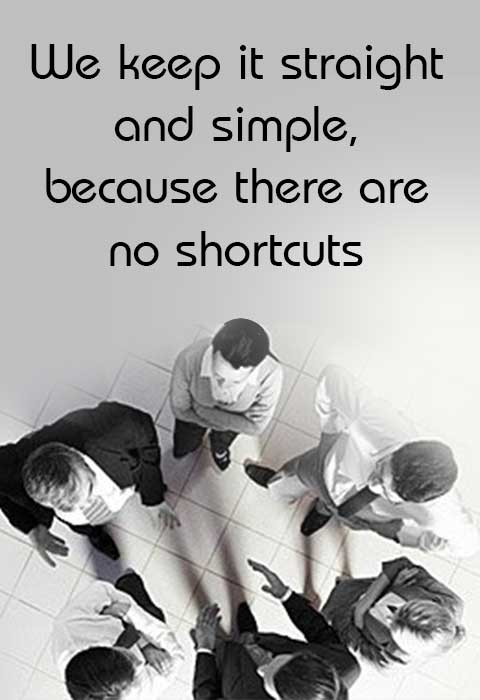Powering Performance with 360 Degree Feedback

Today’s business landscape is fast-paced, competitive and ever changing, and companies greatly benefit from performance systems that forge organisational growth and development, while driving detailed insight into individual and team performance and behaviours.
Performance tools such as the 360 degree feedback process enable these changes and offer new directions in the way organisations can understand, motivate and reinforce desired performance behaviours. Designed as a multi-rater system, the 360 degree feedback process differs significantly from traditional performance tools in that it provides comprehensive employee performance information that is
- gathered from across multiple sources such as managers, colleagues, peers, supervisors and other stakeholders,
- offers a well-rounded evaluation that ensures valuable and specific insight into employee performance behaviours, and areas for action and improvement,
- and importantly, honest and anonymous.
In addition, 360 degree feedback systems offer effective information to enable leadership development programmes, delivering inputs that help assess leadership qualities in managers and supervisors, and how employee groups perceive and respond to them.
Designing an effective 360 degree feedback system
When looking to implement 360 degree feedback systems it is imperative that organisations consider several important factors along organisational needs, questionnaire design and budgets to ensure effective returns on their investment.
For instance, it is essential that existing and future performance goals and directions for the organisation are carefully assessed, to ensure that the feedback tool incorporates features that can consistently align with them.
Also, moving away from a traditional performance review approach to a multi-rater system will involve considerable investment in tools and systems for implementation and training. So it is vital that business and HR managers together determine early on what will work best for them – a readily available off-the-shelf survey software or a custom product that weaves in features specific to the organisation’s needs. It would also be necessary to evaluate the questionnaire design and ensure the tool includes open ended questions that enable honest and open comments, as well as close ended questions that capture quantitative ratings.
Further, it would be prudent to ensure that the performance survey tool is vetted adequately by psychological experts to ensure it aligns well with the organisational style and brand, and delivers feedback that is effective, accurate and anonymous.
Success in implementation and follow through
Effective implementation of 360 degree feedback systems bring out several benefits including increased self-awareness and accountability, clarity on work goals, improved work relationships and quality engagement for employees with their peers and supervisors.
The success of the system, though, hinges on effective follow through and enabling performance by individual managers. It is important that they are provided support to effectively use inputs generated from the feedback process and transform their roles from being just task supervisors to performance enablers. Further, these inputs help them create team structures that align well with organisational objectives, and drive support for their teams in –
Increasing self-awareness – Sharing feedback generated through a 360 degree feedback process, managers can help employees gain increased self-awareness, and develop a balanced view on their strengths and areas for improvement. Employees can also be made aware of certain behavioral blind spots, which they may not discover otherwise. The balanced insight helps employees gain a clearer understanding of specific performance behaviours and their impact on team deliverables. This results in increased employee ownership and willingness to drive changes and initiate actions for positive outcomes.
Skill development – A key highlight of the 360 degree feedback process is that it offers managers a starting point to define and base the development of desired behaviours and skills. Managers get together with their teams and discuss the need for new strengths and skills, and foster ownership for skill improvement through customised development plans. The personalised action plans drive individual accountability and help employees play a central role in steering their career paths.
Team effectiveness – Insights gained from the 360 degree feedback process offers managers and their teams a safe ground to understand performance issues and discuss specific factors that enable or impede performance. Managers can use the insights to drive greater awareness on team goals, and specifically, describe to their teams ‘how’ things need to get done as against just ‘what’ needs to get done.
Candid performance discussions also promote a safe environment for employees to openly share their needs and identify areas for support and intervention. And using these insights, managers can drive team development and increased cohesiveness in the long run.
Effectively leverage strengths – Since 360 degree feedback processes comprehensively gather employee performance data from across the ranks, they serve as powerful channels to unearth information on employee strengths and potential. Managers can use the performance information as an effective guide to help employees leverage their strengths and contribute better to existing projects and future roles. And employees will benefit as they gain opportunities for additional development, and get to explore areas that will aid their long-term career growth.
Overall, organisations that have successfully steered 360 degree feedback systems have used it as a consistent and long-range people development initiative, and not just a performance evaluation method. They ensure that they manage the feedback process meticulously, and effectively take it through completion of the whole loop including training and development, building effective team structures and long range career planning for employees. This helps to unlock potential and deliver long term value – not just for the individual but also for the entire organisation.
Powering Performance with 360 Degree Feedback

Today’s business landscape is fast-paced, competitive and ever changing, and companies greatly benefit from performance systems that forge organisational growth and development, while driving detailed insight into individual and team performance and behaviours.
Performance tools such as the 360 degree feedback process enable these changes and offer new directions in the way organisations can understand, motivate and reinforce desired performance behaviours. Designed as a multi-rater system, the 360 degree feedback process differs significantly from traditional performance tools in that it provides comprehensive employee performance information that is
- gathered from across multiple sources such as managers, colleagues, peers, supervisors and other stakeholders,
- offers a well-rounded evaluation that ensures valuable and specific insight into employee performance behaviours, and areas for action and improvement,
- and importantly, honest and anonymous.
In addition, 360 degree feedback systems offer effective information to enable leadership development programmes, delivering inputs that help assess leadership qualities in managers and supervisors, and how employee groups perceive and respond to them.
Designing an effective 360 degree feedback system
When looking to implement 360 degree feedback systems it is imperative that organisations consider several important factors along organisational needs, questionnaire design and budgets to ensure effective returns on their investment.
For instance, it is essential that existing and future performance goals and directions for the organisation are carefully assessed, to ensure that the feedback tool incorporates features that can consistently align with them.
Also, moving away from a traditional performance review approach to a multi-rater system will involve considerable investment in tools and systems for implementation and training. So it is vital that business and HR managers together determine early on what will work best for them – a readily available off-the-shelf survey software or a custom product that weaves in features specific to the organisation’s needs. It would also be necessary to evaluate the questionnaire design and ensure the tool includes open ended questions that enable honest and open comments, as well as close ended questions that capture quantitative ratings.
Further, it would be prudent to ensure that the performance survey tool is vetted adequately by psychological experts to ensure it aligns well with the organisational style and brand, and delivers feedback that is effective, accurate and anonymous.
Success in implementation and follow through
Effective implementation of 360 degree feedback systems bring out several benefits including increased self-awareness and accountability, clarity on work goals, improved work relationships and quality engagement for employees with their peers and supervisors.
The success of the system, though, hinges on effective follow through and enabling performance by individual managers. It is important that they are provided support to effectively use inputs generated from the feedback process and transform their roles from being just task supervisors to performance enablers. Further, these inputs help them create team structures that align well with organisational objectives, and drive support for their teams in –
Increasing self-awareness – Sharing feedback generated through a 360 degree feedback process, managers can help employees gain increased self-awareness, and develop a balanced view on their strengths and areas for improvement. Employees can also be made aware of certain behavioral blind spots, which they may not discover otherwise. The balanced insight helps employees gain a clearer understanding of specific performance behaviours and their impact on team deliverables. This results in increased employee ownership and willingness to drive changes and initiate actions for positive outcomes.
Skill development – A key highlight of the 360 degree feedback process is that it offers managers a starting point to define and base the development of desired behaviours and skills. Managers get together with their teams and discuss the need for new strengths and skills, and foster ownership for skill improvement through customised development plans. The personalised action plans drive individual accountability and help employees play a central role in steering their career paths.
Team effectiveness – Insights gained from the 360 degree feedback process offers managers and their teams a safe ground to understand performance issues and discuss specific factors that enable or impede performance. Managers can use the insights to drive greater awareness on team goals, and specifically, describe to their teams ‘how’ things need to get done as against just ‘what’ needs to get done.
Candid performance discussions also promote a safe environment for employees to openly share their needs and identify areas for support and intervention. And using these insights, managers can drive team development and increased cohesiveness in the long run.
Effectively leverage strengths – Since 360 degree feedback processes comprehensively gather employee performance data from across the ranks, they serve as powerful channels to unearth information on employee strengths and potential. Managers can use the performance information as an effective guide to help employees leverage their strengths and contribute better to existing projects and future roles. And employees will benefit as they gain opportunities for additional development, and get to explore areas that will aid their long-term career growth.
Overall, organisations that have successfully steered 360 degree feedback systems have used it as a consistent and long-range people development initiative, and not just a performance evaluation method. They ensure that they manage the feedback process meticulously, and effectively take it through completion of the whole loop including training and development, building effective team structures and long range career planning for employees. This helps to unlock potential and deliver long term value – not just for the individual but also for the entire organisation.




